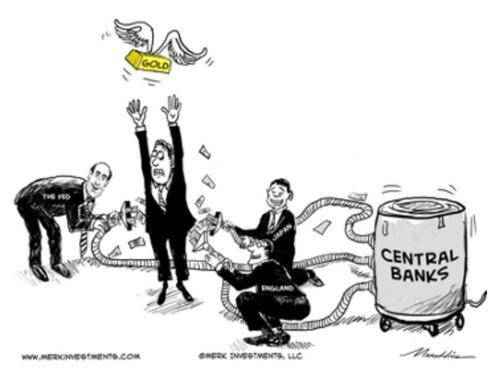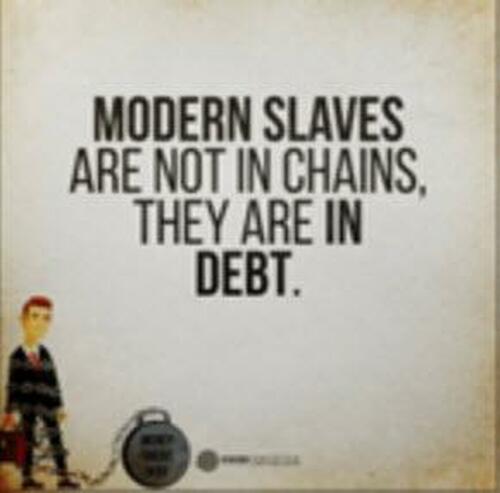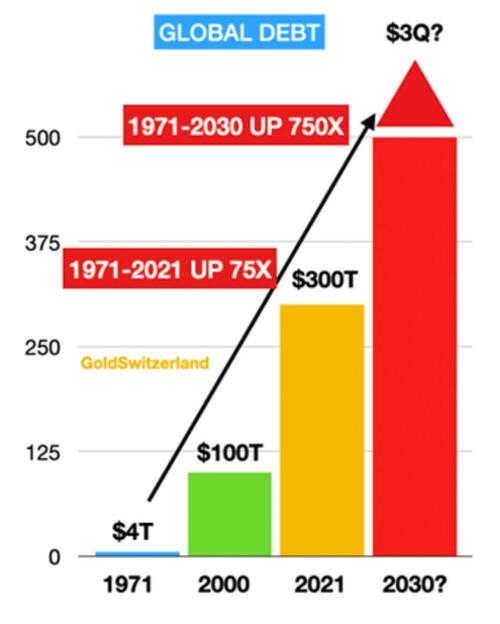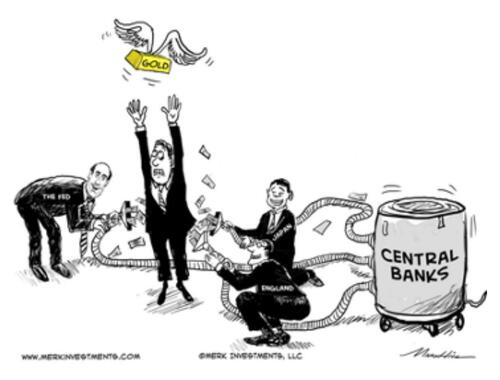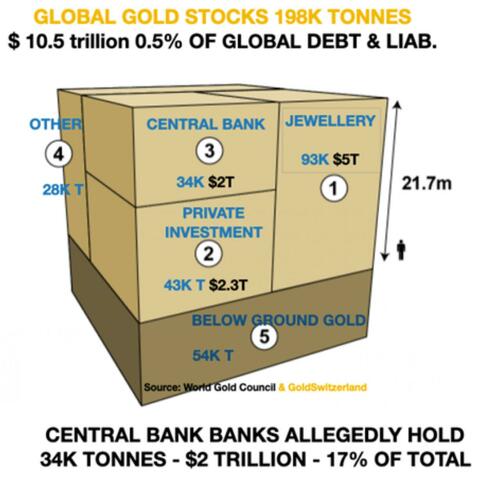A Lehman squared moment is approaching with Swiss banks and UK pension funds under severe pressure.
But let’s first look at another circus –
The global travelling circus is now reaching ever more nations just as expected. This is right on cue at the end of the most extraordinary financial bubble era in history.
It is obviously debt creation, money printing and the resulting currency debasement which creates the inevitable fall of yet another monetary system. This has been the norm throughout history so “the more it changes, the more it stays the same”.
It started this time with the closing of the gold window in August 1971. That was the beginning of a financial and political circus which continuously added more risk and more lethal acts to keep the circus going.
An economic upheaval always causes political chaos with a revolving door of leaders and political parties going and coming. Remember, a government is never voted in but invariably voted out.
What was always clear to a few of us was that the circus would end with all of the acts crashing virtually simultaneously.
And this is what is starting to happen now.
We have just seen a political farce in the UK. Even the most talented playwright could not have created such a wonderful merry-go-round of characters who we have seen coming in and out of Downing Street.
Just look at the UK Prime Ministers. First there was David Cameron who had to resign in 2016 due to mishandling Brexit. Then the next PM Theresa May had to go in 2019 since she couldn’t get anything done, including Brexit. Then Boris Johnson won the biggest Conservative majority ever but was forced out in 2022 due to Partygate during Covid.
In came Liz Truss as PM in September this year but she only lasted 44 days due to her and her Chancellor’s (Finance Minister) mishandling of the mini budget. They managed to crash the pound and UK gilts (bonds) on the international markets leading to the Bank of England having to step in. Both gilts, derivatives and UK pension funds were at the point of implosion.
And now the carousel has gone full circle with Rishi Sunak the ex-Chancellor taking the helm as Boris bailed out. Boris clearly decided that speeches and other private engagements would be more fruitful than being part of the circus. But he will most certainly attempt to come back.
What a circus!
It just shows that at the end of an economic era, we get the worst leaders who always promise but never deliver.
In a bankrupt global system, you reach a point when the value of printed money dies and whatever a leader promises can no longer be bought with fake money which will always have ZERO intrinsic value.
No one must believe that this is only happening in the UK. The US has a leader who sadly is too old and not in command. He has a deputy who is not respected by anyone. So if Biden, as many believe, doesn’t make it to the end of his period, the US is likely to have a real leadership circus. Also, the US economy is chronically ill having run deficits for 90 years. What keeps the US alive temporarily is the dollar which is strong because it is the least ugly horse in the currency stable.
Scholz in Germany was given a very bad hand by Merkel but has certainly not improved it since he took charge and Germany is on the verge of collapse.
Most countries are the same. Macron doesn’t have a majority in France and strikes are paralysing his country on a daily basis. And his new Italian counterpart, PM Georgina Meloni certainly doesn’t shred her words. Just watch her having a very aggressive go at Macron (poor video quality).
But for people (like myself) who have difficulty accepting the current wave of Wokeism in the world, Meloni’s attack on this fad and her strong defence of family values is a “must watch” (video link). So there is still hope when leaders dare to express views that most media including social media censor today.
DEBT BONDAGE
History has dealt with punishment of non payment of debt in a variety of ways.
In the early Roman Republic around 2,500 years ago, there was a debt bondage called Nexum. In simple terms, a borrower pledged his person as collateral. If he didn’t pay his debt he was enslaved often for an undetermined period.
Jumping quickly to modern times, it would mean that the majority of people, especially in the West would all be debt slaves today. The big difference today is that most people are debt slaves but they have physical freedom. Since virtually nobody, individuals, companies or sovereign states, neither has the intention nor the ability to repay debt, the world now has a chronic debt slavery.
It is even worse than that. The playing field is totally skewed in favour of the banks, big business and the wealthy. The more money you can play with, the more money you can make risk free.
UNLIMITED PERSONAL LIABILITY
No banker, no company management or business owner ever has to take the loss personally if he makes a mistake. Losses are socialised and profits are capitalised. Heads I win, Tails I don’t lose!
But there are honourable exceptions. A smaller number of Swiss banks still work with the principle of unlimited personal liability for the partners/owners. If the global financial system and governments applied that principle, imagine how different the world would look not just financially but also ethically.
With such a system, we wouldn’t just adore the golden calf but put human values first. And whenever we evaluate an investment proposal or granting someone a loan, we wouldn’t just look at how much we could gain personally but if the transaction was sound both economically and ethically and if the risk of loss was minimal.
But I can hear many people protesting and arguing that the world could never have grown as fast without this massive amount of debt. That is of course correct in the short term. But rather than fast growth and then a total implosion of assets and debt, we would then have a much more stable system.
GLOBAL DEBT $300 TRILLION PLUS $2.2 TRILLION OF DERIVATIVES & LIAB.
Just look at the last 50 years since 1971. Globally governments and central banks have contributed to the creation of almost $300 trillion of new money plus quasi money in the form of unfunded liabilities and derivatives of $2.2 quadrillion making £2.5 trillion in total.
As debt explodes, the world could easily face a debt burden of $3 quadrillion by 2025-2030 as the derivatives and unfunded liabilities become debt.
DERIVATIVES – THE MOST DANGEROUS FINANCIAL WEAPON CREATED
Derivatives is not a new instrument. For example during the Tulipomania bubble in Holland in the 17th century, it was possible to trade options on tulip bulbs.
Today the financial system has developed derivatives to become such a sophisticated instrument that virtually no financial transaction can take place without involving some form of derivatives.
But the biggest problem with derivatives is that the quants that create them don’t understand the consequences of their actions. And senior management, including boards of directors, haven’t got a clue of the massive risk derivatives represent.
The collapse in 1998 of LTCM (Long Term Capital Management), set up by Nobel Prize winners and the 2007-9 Sub-Prime crisis is a clear proof of the ignorance of the risk of derivatives.
As an aside, it seems that anyone can receive a Nobel Prize today. Just take Bernanke, he has been awarded the Nobel Prize in economics. Remember that Bernanke, when he was Head of the Fed, printed more money than anyone in history!
What we have to understand is that the committee which chooses the winner of the Nobel economy prize is the Swedish Riksbank (central bank), filled with Keynesian money printers!
Need I say more?
Derivatives have been a massive profit earner for all banks involved. They were initially created as defensive hedge instruments but today they are the most dangerous and aggressive financial instrument of destruction.
Just over 10 years ago, global derivatives were $1.2 quadrillion. Then the Bank of International Settlements (BIS) in Basel decided to halve the values to $600 trillion overnight by changing the basis of calculation. But the $1.2Q risk was still remained at the time.
Since then Over The Counter (OTC) derivatives have seen an explosive growth just like all financial assets. The beauty of OTC derivatives, from the issuers point of view, is that they don’t need to be declared like derivatives traded on exchanges.
And today there are not just interest rate and forex derivatives. No, these instruments are involved in virtually every single financial transaction. Every stock and bond fund involves derivatives. And today most of these funds consist of only synthetic instruments and contain none of the virtual stocks or bonds they represent.
CENTRAL BANKS RESCUING UK AND SWISS BANKS
Just a couple of weeks ago, the UK and thus the global financial system was under severe pressure due to pension funds’ interest derivatives collapsing in value after the UK Budget. Pension funds are globally on the verge of collapse due to rising interest rates and insolvency risk. In order to create cash flow, the pension funds have acquired interest rate swaps. But as bond rates surged these swaps collapsed in value, requiring either liquidation or margin injection.
And thus the Bank of England had to support the UK pension funds and financial system to the extent of £65 billion to avoid default.
In the last couple of weeks we have seen a dismal situation in Switzerland. Swiss banks, through the Swiss National Bank (SNB) have received $11 billion ongoing support through currency swaps (a form of dollar loans) from the Fed.
No details have been revealed of the Swiss situation except that 17 banks are involved. It could also be international banks. But most certainly the ailing Credit Suisse is involved. Credit Suisse just announced a 4 billion Swiss francs loss.
What is clear is that these UK and Swiss situations are just the tip of the iceberg.
The world is now on the verge of another Lehman moment which could erupt at any time.
CENTRAL BANKS NEED TO VACUUM $2 QUADRILLION DERIVATIVES
These derivatives which some of us now estimate to be over $2 quadrillion (not $600b reported by BIS) are what will bring the financial system down.
Every derivative includes an interest element. And the construction of all derivatives did not foresee the major and rapid rise in interest rates that the world has seen. Remember Powell and Lagarde calling inflation transitory just a year ago!
WITH OVER $ 2 QUADRILLION DEBT, PROTECTION IS CRITICAL
This article is not directly about gold. No, it is about the disastrous consequences of governments’ deceitful mismanagement of the economy and of your money. But based on history, gold has been the best protection or insurance against such mismanagement.
Why do 99.5 % of all investors in financial assets avoid the investment that is continuously backed and supported by every government and every central bank globally.
Investors own $600 trillion in stocks, bonds and property which have all enjoyed a 50 year (40 years for bonds) explosion in value.
But why do they only hold $2.3 trillion of an asset that without fail and for 5,000 years has always appreciated and never gone to zero or even gone down substantially over time?
It is the simplest asset to understand and appreciate. It looks good, even shiny and you don’t have to understand the technology behind it nor the balance sheet.
All you need to understand is that every day and every year your government does whatever it can to increase the value of this asset.
So this asset that only gets 0.5% of world financial investments and is continuously supported by governments through their constant creation of money is obviously gold.
What very few investors know, partly because governments are suppressing it, is that gold is the only money that has survived throughout history. Every other currency has without fail gone to ZERO and become extinct.
With this perfect 100% record for gold, it certainly is surprising that virtually nobody owns it!
Investors don’t understand gold or its relevance. There are many reasons for this.
Governments hate gold in spite of the fact that all their actions make gold appreciate considerably over time.
They are of course totally aware of the fact that their totally inept management of the economy and of the monetary system, destroys the value of fiat money.
This is why it is in their interest to conceal their mismanagement of the economy by suppressing the value of gold in the paper market.
But investors ignorance of gold and reluctance to buy it will very soon go through a tectonic change.
OVER $2 QUADRILLION OF LIABILITIES RESTING ON $2 TRILLION OF GOLD
Total gold ever produced in the world is $10.5 trillion. Most of this gold is in jewellery. Central banks around the world hold $2 trillion. That includes $425 billion that US allegedly hold. Many people doubt this figure.
So with over $2 quadrillion (2 and15 ZEROS) of debt and liabilities resting on a foundation of $2 trillion of government owned gold that makes a gold coverage of 0.1% or a leverage of 1000X!
So that is clearly an inverse pyramid with a very weak foundation. A sound financial system needs a very solid foundation of real money. Quadrillions of debt and liabilities can not survive resting on this feeble amount of gold. If gold went up 100X to say $160,000, the coverage would be 10% which is still hardly acceptable.
So the $2 quadrillion financial weapon of mass destruction is now on the way to totally destroy the system. This is a global house of cards that will collapse at some point in the not too distant future.
Obviously Central Banks will first print unlimited amounts of money, buying up to $2 quadrillion of outstanding derivatives, turning them to on balance sheet debt. This will create a vicious circle of more debt, higher interest rates and higher inflation, with probable hyperinflation as debt markets default.
No government and no central bank can solve the problem that they have created. More of the same just won’t work.
So these are the gigantic risks that the world is now facing.
Obviously there is no certainty in these kind of forecasts. But what is certain is that risk of this magnitude must be protected.
There is no reason to believe that gold this time will play a different role to what is has done throughout history.
Gold stands as the sole protector of a sound currency system and the only money which has survived throughout the ages.

